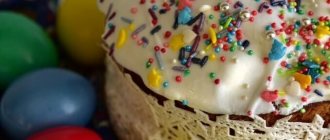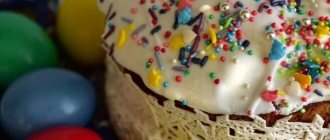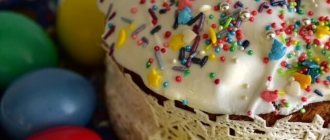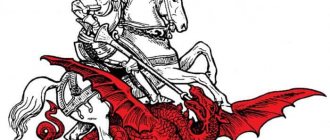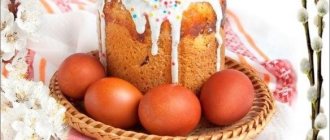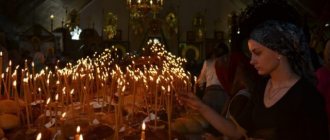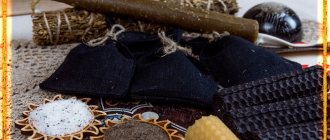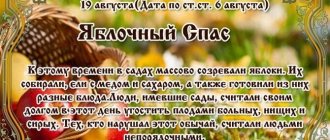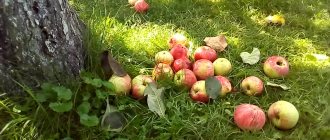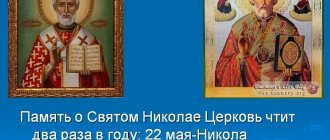Honey Spas 2022 / ua.depositphotos.com In August, a series of special days begins - which are popularly called Spas. And the sweetest opens them - the Honey Savior or the Makovei holiday. The Orthodox Church honors this day as the removal of the honorable Trees of the Life-Giving Cross.
The Orthodox calendar for 2022 will remind you of important church dates, the beginning of fasting and parental Saturdays.
What date is Honey Spas?
Honey Spas in 2022, as always, is August 14. The Assumption Fast begins with this holiday (from August 14 to 28 in 2020). Actually, in the church calendar there is no such holiday as the Honey Savior. On this day the Church celebrates the Feast of the All-Merciful Savior and the Most Holy Theotokos . It was installed in honor of the signs from the icons of the Savior, the Most Holy Theotokos and the honorable cross during the battles of the holy noble prince Andrei Bogolyubsky with the Volga Bulgars in 1164. This day is also dedicated to the holiday of the Origin (wearing down) of the Honest Trees of the Life-Giving Cross of the Lord . These church holidays coincided with the end of the honey harvest. As a result, among the people, the holiday of the people’s favorite delicacy was firmly connected with the Orthodox holiday. And now we, like our ancestors, celebrate the Honey Savior in the temple, blessing honey and venerating the Cross of the Lord.
Signs on Makovei (Poppy Spas)
Important milestone dates in the Slavic calendar are not only holidays, but also times when it is necessary to take note of the weather. There are many weather signs associated with the First Savior:
- birds flew in schools on August 14 - early winter;
- getting caught in the rain on Makovey is fortunate;
- rainfall on a holiday - there will be no fires in the forests;
- a strong wind on this day foreshadowed a snowy winter;
- they said that whatever the weather is like on August 14, the same day will happen on Assumption (August 28);
- cattle to lie down in a stable - there will be bad weather;
- a clear hot day for the festival - to a good offspring of livestock.
It was noted that from this day on, deer enter the reservoirs, which means that swimming is not allowed. Makovey ended summer, and from that day on the approach of autumn was clearly felt. The weather was different: there were years when it was dry, and there were also periods with prolonged showers and thunderstorms. No wonder people said about August 14: “The Savior has everything in stock: wind, rain, buckets, and different weather conditions.”
After the holiday, the main harvest began, sowing winter crops. In Siberia, from mid-August they went to cone pine trees. On August 14, the cattle were bathed and after that day they were not driven into the river or lakes.
History of Honey Spas
On Honey Savior, all churches celebrate the All-Merciful Savior and the Most Holy Theotokos in honor of the victory in 1164 of Grand Duke Andrei Bogolyubsky in a campaign against the Volga Bulgarians and the Greek Emperor Michael over the Saracens.
The main holiday of this day is the Destruction of the Honest Trees of the Life-Giving Cross of the Lord , which was established back in the 9th century in Constantinople, “due to illnesses that very often occurred in August.” On this day, the Venerable Tree of the Cross was worn out from the royal treasury, the streets of the city were consecrated, and “from this day onwards until the Dormition of the Most Holy Theotokos, performing litias throughout the city, they then offered it to the people for worship” (from a 19th-century Greek book of hours).
On this day, in churches at Matins after the Great Doxology, the Cross is taken out so that everyone who wishes can venerate the Holy Cross. Afterwards, a small blessing of water takes place.
Signs and rituals of August 14
Most signs are associated with nature, water sources, plants and animals. On this day, we noticed temperature changes and weather changes.
The most popular signs for August 14:
- On this day, flocks of cranes gathered together for the upcoming flight to warmer climes.
- If the swifts and swallows flew away first, then prolonged cold spells at night will begin.
- It was believed that August 14 was the last day for collecting honey, and it was time to prepare the bees for winter.
- On this day they picked raspberries. People believe that it has absorbed all the beneficial properties.
- If all the winter crops were sown before Makovei, then the harvest will be rich.
- Collecting poppies in your yard means protecting your home from evil and dark forces.
- Livestock were fed refined grains to improve the health of the animals.
- On August 14, women were forgiven all their sins. All relatives and friends, especially men, must accept and forgive the woman, without scandal or shouting.
- If roses shed their petals overnight, the water in the springs will soon become cold and it will be impossible to swim in it.
The weather was the main object of observation. People knew that if it rained in Honey Spas, then precipitation would be rare in the fall and spring, and there would be no drought in the summer. If the weather was hot, then the next harvest will be poor, and the spring will be rich in thunderstorms. Interestingly, the weather could change several times a day; more often it was recorded in order to later check the interpretation.
Ancient pagans considered water to be the main element on this day. Paganism is gone, but signs associated with water remain. People washed themselves with water from springs or dew in the morning, relieving illnesses and illnesses.
Washing livestock was done to increase its health and longevity.
On this day, men collected honey from early morning, and women collected medicinal herbs. It was believed that mint, wheat, poppy and calendula picked on this day had amazing healing properties. The girls wove wreaths from them and left them in the house to protect household members from diseases, and the home from dark forces and evil tongues.
Pagans decorated wells and water sources to imbue the water with healing properties. This ritual has not survived to this day in its “pure form” and is not considered an Orthodox tradition.
Honey Spas traditions
On the Honey Savior, it is customary to bring new harvested honey, poppy seeds, medicinal herbs to the temple for consecration - everything that August bears fruit with.
On this day, beekeepers have a pious tradition of distributing a piece of honeycomb with honey to children and the poor. The culinary traditions of Honey Savior cannot but delight those with a sweet tooth: on this day they bake Lenten honey gingerbreads, gingerbreads, Lenten pancakes with honey, honey kvass, and brew mead (by the way, it was used in Rus' at that time as a cure for ailments).
There is another name for the holiday on August 14 - Makovei, popularly known as Poppy Spas. The churches remember the seven brother-martyrs of the Maccabees with their mother Solomia. It is known that in 166 BC. The Maccabean dynasty rebelled against edicts that prohibited Jewish religious practices. And again, at the linguistic level, there was a “fusion” of a folk custom (from August 14 they began to collect poppy seeds in the fields and bake pies with this filling) and a church holiday.
Why is Honey Spas also called “Spas on Water”? There is also a completely everyday explanation: on this day old wells, reservoirs and holy springs were cleaned and new ones were blessed. After the religious procession, people bathed “to cleanse themselves from sins” and bathed all their livestock. After the so-called “Wet Spas”, the peasants no longer swam.
What you can and cannot do on this day
On a major holiday, Orthodox Christians hurried to church for services. They brought vegetables and fruits for blessing, honey, poppy seeds, and medicinal herbs. On First Spas, girls and women prayed especially fervently, since it was believed that on this day all “woman’s sins” were forgiven.
It was a good tradition to thank the beekeepers for their hard work, distribute alms to the poor, and treat those in need with the blessed gifts of the new harvest. On the holiday, they invited people to their place and went to visit, prepared a Lenten meal, and had fun. Only urgent work was allowed (for example, in an apiary), all other economic matters were postponed. In a number of regions, fairs were held on the holiday.
As on any other big holiday, on Honey Spas it was not customary to swear, start quarrels and conflicts in the family or with other people. The ban extended to noisy feasts; people walked calmly, with bright joy, without excesses.
Since strict fasting began, the dishes on the tables were lenten. Fast food is prohibited, and so on until the end of the period, until the Assumption.
Honey Spas photo
Photo by Yulia Makoveychuk
Photo by Gatis Gribusts, www.flickr.com
Apiary of the Gremyachev Monastery, photo by Vladimir Eshtokin
Photo St. Petersburg Theological Academy, www.flickr.com
Photo by Yulia Makoveychuk
Photo by Lev Yakupov, www.flickr.com
Photo by Sergei Vavinov, www.flickr.ru
Photo by Siona Karen, www.flickr.ru
Photo by Petras Gagilas, www.flickr.com
Apiary of the Gremyachev Monastery, photo by Vladimir Eshtokin
When is the Honey Savior celebrated in 2022?
The pagan holiday, which was dedicated to the beginning of the harvest, is associated with the beginning of August. People will be busy harvesting vegetables and fruits, forest gifts, and honey almost until mid-autumn. But in the future, the days will rapidly shorten and the weather will deteriorate. In fact, the popular celebration before the start of the harvest is a way to appease the pagan gods so that they will give good weather and the opportunity to work hard. Traditional festivities were especially lavish: with dancing and songs to the accordion, lighting fires and laying sumptuous tables in the villages. The very name Spas is associated with the custom of helping widows and orphans before the onset of cold weather, which helped save their lives.
Church Honey Spas
As historical practice shows, many pagan holidays were successfully replaced by the church with church dates of similar semantic meaning. This feature made it possible to shift the emphasis from folk customs to Christian postulates.
Therefore, the description of the Honey Savior includes both folk rituals and church traditions. The same first day of the last month of August was chosen as the date of the Christian holiday.
However, when asked what date the Honey Savior will be celebrated, we hear the date August 14, which is associated with the transition to a new calendar.
Three Spas in August: Honey, Apple, Nut – history, traditions, signs
In the last month of summer, Orthodox believers celebrate three major holidays, three Saviors - Honey, Apple and Bread (Nut).
Honey Spas
The very first Spas of August is invariably celebrated on August 14 and coincides with the beginning of the Dormition Lent.
At the heart of the first Savior is a holiday with a long name - the Descent of the Honest Trees of the Life-Giving Cross of the Lord.
The tradition of celebrating it came to us from Constantinople - it was here that part of the cross on which Jesus was crucified was kept. Once a year, the relic was taken out of the temple and they walked with it in a religious procession around the capital “to consecrate places and ward off diseases.” Later, such processions spread to Rus', only our ancestors wore the most ordinary cross.
Time passed and a new celebration joined the Feast of the Holy Cross. And it all started with a miracle...
In 1164, completely independently and at a considerable distance from each other, the Byzantine Emperor Manuel and the Russian Prince Andrei Bogolyubsky defeated their enemies. And both winners had the same sign: a radiance emanated from the cross of Christ, the icon of the Vladimir Mother of God and the image of the Savior, who were among the army. Manuel and Andrey sent messages to each other about their glorious victory and amazing spectacle. Imagine their amazement when it turned out that a miracle had been sent down to both of them at once! In honor of this great event, the date of the first Savior was set. Soon two celebrations - the Feast of the Cross of the Lord and the Savior - merged into one.
The first Spas has several names: Spas on the water, Wet, or Honey. In the temple on this day it is necessary to bless water, honey and poppy seeds, and believers take communion.
August 14, 988 (August 1, old style) is celebrated as the day of the beginning of the Baptism of Rus'. Since then, according to tradition, at this time old wells were cleaned or new ones were blessed, then a religious procession was made to rivers, ponds, and lakes to bless the water. After that, they bathed themselves and bathed the cattle in order to wash away their sins and be healthier.
This Spas is also called Honey Spas due to the fact that by this day the honeycombs in the hives are already filled with fresh honey and it’s time to start collecting. Only from the honey Savior was it allowed to eat honey consecrated by the church.
They say that even the air itself on the day of the First Savior is saturated with the aroma of honey. After all, the First Savior is a honey holiday, it is a holiday for beekeepers. Only after consecration is the first honey ready for consumption. Russians have long respected honey, because it is one of the healthiest and most delicious products. According to legend, a honey drink cured Ilya Muromets himself from paralysis.
Part of the honey was necessarily left in the church, part was used to treat the poor, and was also distributed to the homes of poor neighbors.
From this day on, beekeepers began collecting honey from overcrowded hives. Then the delicacy was taken to the church to be blessed, only after that they tasted the honey and treated it to loved ones. This is where the first, most famous name of Spas comes from - Honey.
By August 14, poppy harvesting began, from which various treats were made for the festive table. This is how Spas received its second name - Poppy, or Makovey. Folk tradition associated the Poppy Savior with the church day of remembrance of the seven Old Testament martyrs of the Maccabees.
On this day they asked the Lord and the saints for a good harvest and a hungry winter. They blessed water in springs and collected herbs for amulets.
The Savior was celebrated modestly, because by the beginning of August work related to the harvest was still in full swing - and there was no time for a magnificent holiday. After a hard day of work, celebrations were held, accompanied by dancing and songs, and treats with honey and poppy seeds, as well as mead, were on the table.
Apple Spas
The harvest festival, which is celebrated annually on August 19, is timed to coincide with a major church date - the Transfiguration of the Lord.
According to legend, from that day on nature turned towards autumn and turned away from summer. The earth was transformed and gave people a new harvest of fruits. Apples collected at the end of summer were taken to church to be blessed and then used to prepare Lenten treats.
On this holiday - the day of the Transfiguration of the Lord - the unification of the divine and human principles in the person of Jesus Christ is glorified. According to legend, to maintain faith in His disciples, when they saw His suffering, Jesus Christ showed them His divine face.
Shortly before the crucifixion, Jesus Christ ascended a high mountain with three disciples: James, Peter and John, to pray. Suddenly they saw that Jesus seemed to be transformed: His face shone like the sun, and His clothes became snow-white. Then two prophets appeared to them, Elijah and Moses, and had a conversation with Him about what awaited Him. At this, the hearts of the disciples were filled with extraordinary joy.
Since then, on August 19, people dressed in white go to Christian churches for the Divine Liturgy - this is the color of the Transfiguration.
Apple Spas is a symbol of the transformation of nature before the onset of autumn. It is believed that from mid-August the nights become cold. According to popular belief, apples finish ripening only on the Day of the Savior - until then you can only collect carrion, and believers do not eat apples at all until this day.
There is a belief that if parents do not eat an apple before the Second Savior, in the next world their children will be given gifts (including heavenly apples). But if the parents ate apples, then no. Therefore, most parents whose children have died consider it a great sin to eat apples before August 19th. And from this day on, you can pick various fruits from the new harvest, including apples.
In general, fruits are collected in order to bless: in Russia these are apples, and the first Christians traditionally brought grapes to the altar.
In villages it is customary to make apple jam, bake pies with apples and treat them to all neighbors and acquaintances. It is believed that apples blessed on the Transfiguration have special power: people, biting and swallowing the first piece, made wishes - it was believed that they would definitely come true.
They also say about Apple Spas - “the first autumns,” that is, the sign of autumn. This holiday is a reminder of the spiritual transformation of each of us.
Previously, it was customary after a church service to distribute blessed apples to everyone present. They handed them over to homes for the sick and infirm, treated all the holy fools and the homeless, and gave them to the poor and destitute.
According to legend, two birds fly to the apple tree from the Garden of Eden: Alkonost and Sirin, the bird of joy and the bird of sadness. The Sirin bird is the first to fly to the apple tree and peck at the apples, flapping its wings covered with dead dew. Therefore, someone who picks an apple ahead of schedule may end up with exactly the same one that was hit by that dew. The Alkonost bird flies to the Day of the Savior, shakes off the living dew from its wings. And from this day on, all the apples on the trees are transformed, become healing, and, according to legend, a life-giving force appears in them.
As we see, religious traditions are closely intertwined with pagan rituals. This holiday conventionally draws a line between the summer season and autumn, which is generous with gifts and brings with it the transformation of nature. The name of the holiday comes from the name of the Savior, who at the cost of his life brought to people who believed in him hope for eternal life and the grace of forgiveness.
On this day, some of the blessed apples were carried to the cemetery and placed on the graves of deceased relatives and close people. Ears of grain were also blessed, which were therefore well preserved until the next year.
Girls charmed apples to get married and be happy this year. While eating the fruit, they made a wish for the groom, saying: “What is wished for is far-fetched! What is far-fetched will come true! What will come true will not pass!
Despite the fact that work in the fields was still ongoing, the Apple Savior was especially revered, so folk festivals were organized with songs and dances.
The third one was saved in August
The third Savior of August, which is popularly called Bread, or Nut.
The holiday is celebrated on August 29. It was believed that by this day the hazel had ripened (it was collected in the forest and also blessed in churches), and the first bread was baked from the grain of the new harvest.
From August 29, it was allowed to eat this year's nuts. It was believed that the very first collection of hazelnuts must be blessed in the church and distributed to the suffering and poor in order to gain grace and health in the future.
The Savior is called the bread one because the day before the Dormition of the Most Holy Theotokos was celebrated, and with it they finished reaping bread. On this day, pies were baked only from new flour.
There is also a church name - Savior of the Image of Christ the Savior Not Made by Hands. In the Orthodox tradition, this story is associated with the sick king of Edessa, Abgarius, and Thaddeus’ visit to him after the artist he sent failed to depict Christ. Then Christ washed his face, wiped it with the cloth on which the imprint remained, and handed it to the artist. This miraculous image subsequently worked miracles more than once, healing people, until it was lost during the Fourth Crusade.
As the names suggest, the main dishes on this holiday are freshly baked bread from the new harvest flour and nuts. Bread was served on the festive table and treated to close people and neighbors. The oldest man in the family had to taste the bread first.
On the third Spas, people went into the forest to collect nuts, after which the entire harvest was poured onto a canvas, and a tablecloth was laid next to it, on which there were treats. The holiday was celebrated outdoors with a large circle of guests.
On this holiday they traded canvases and canvases. One of the strictest fasts, the Assumption fast, was ending, during which even vegetable oil could be eaten only on weekends and was observed from August 14 to 28. But this was not a burden, because it was allowed to eat berries, fruits, and mushrooms.
Based on materials from the sites Dailyhoro and “Scarlet Sails”
Rituals, fortune telling, conspiracies
Honey Spas is rich in magical spells and rituals thanks primarily to honey. People have long noticed its healing power and tried to enhance it or simply use it correctly. So, the patient was given warm milk with the addition of a spoon of honey. Over the drink, the hostess read a conspiracy calling on the disease to leave a person and go into the forests and swamps, where “people don’t walk and the sun doesn’t shine.”
Good luck was attracted by more complex rituals. Three varieties of blessed honey were mixed. For example, linden, floral and sunflower. At noon on August 14, they coated a piece of birch bark with the mixture and read a special spell: “Happiness is in me, badness is from me. Just as honey is sweet, so may my life be sweet.” Then it was necessary to wash with spring water.
Why are Spas called that?
The word “Savior” is intuitively associated with the Savior, Jesus Christ. And this is how it really is. The holidays of Honey, Apple and Nut Savior in meaning and name come from this word.
In general, Spas is a whole series of the last days of August (14,19 and 29), when summer is already beginning to lose ground, giving way to golden autumn. These days the sun sets significantly earlier than usual, and nature shines with special yellow colors.
But for our ancestors, the busiest time was approaching, so they devoted most of their time not to contemplation, but to a very serious matter - harvesting. They had a long winter ahead of them, so August and September were especially important months, when one day really feeds the whole year.
When harvesting, the Slavs created large reserves (aka supplies). It is no coincidence that these words coincide with the common root “saved.” People seemed to be escaping the long, cold winter by harvesting crops, preparing pickles, jams and many other delicacies, the recipes of which have survived almost in their original form to this day.
